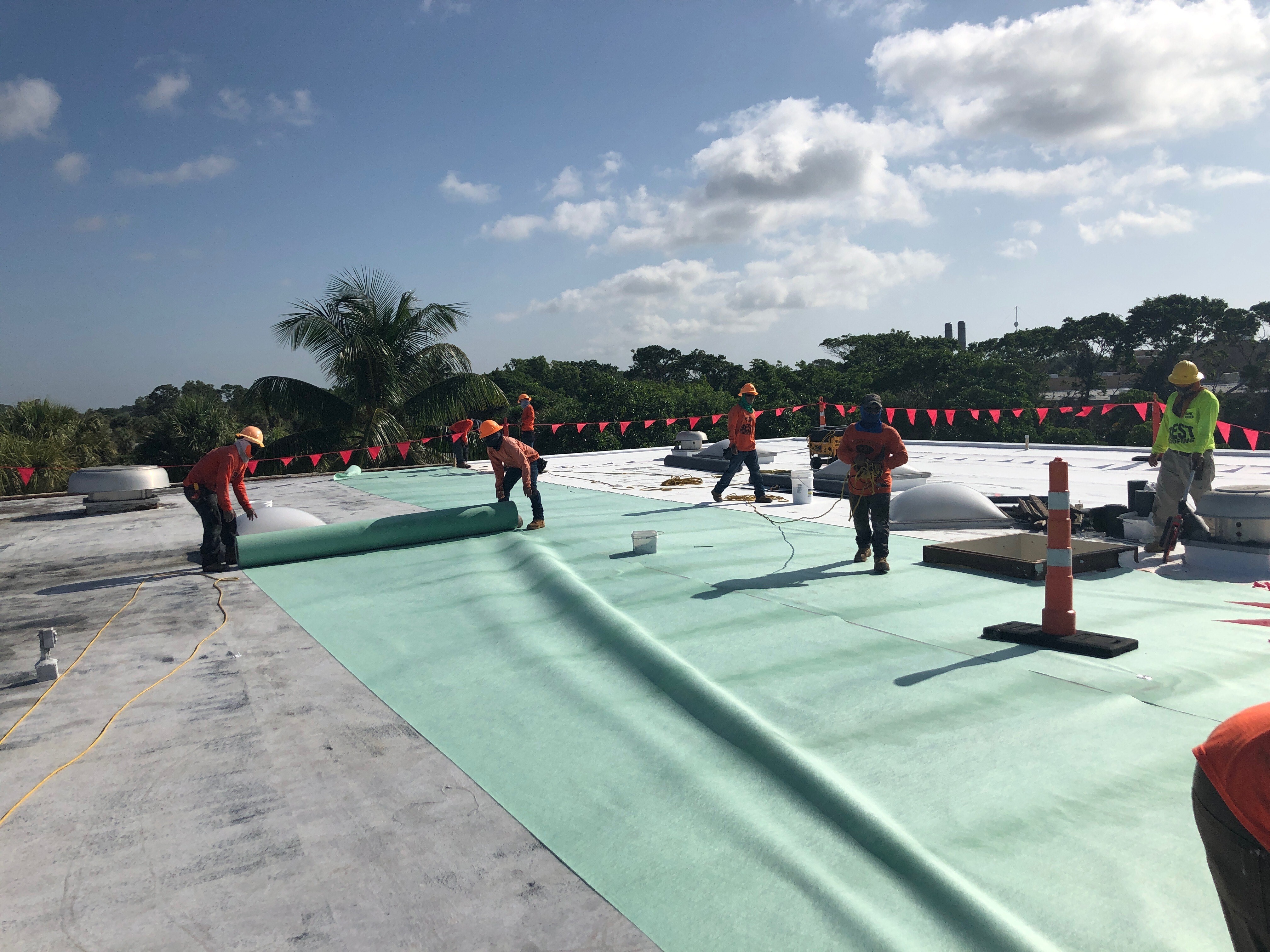How does a reflective roof coating make a roof “cool?”
Nearly any roof can be converted into a “cool” roof by applying a white reflective roof coating. This can be achieved at any time during the life of the existing roof. Coatings can be applied to new and existing dark-colored roofs. A reflective roof is defined as one that has properties of at least 75% reflectivity and 65% emissivity. It reflects solar energy back into space so the roof surface remains cooler. A “black” roof becomes incredibly hot in the heat of summer, with this solar energy getting absorbed into the building. The installation of a reflective coating not only reduces the surface temperature and heat transfer into the structure, it also acts as the first line of defense against water penetration.
What are the benefits to using a reflective roof coating?
Because the reflective roof coating cools and protects the roof surface, it:
- Reduces the temperature inside the building it covers by 6-9 degrees
- Reduces the roof surface temperature by 20-60 degrees
- Increases the effective “R” value of insulation
- Increases the efficiency of roof-mounted HVAC units
- Saves on the cost of air conditioning
- Results in lower energy costs overall to your building by reducing your “peak electrical demand” level
- Creates a more comfortable environment in areas where there is no air conditioning
- Slows premature aging of a roof due to high surface temperatures and UV degradation
- Results in reduced respiratory health risks and the risk of heat-related deaths, especially in a “Heat Island” area like Miami
Is the cost of applying a reflective roof coating a good investment?
Yes, applying a reflective roof coating is an excellent investment.* If the installation costs for a reflective roof coating are slightly higher in certain situations, the long-term benefits can pay back exponentially, by providing:
- Longer roof life, better durability—coatings protect the roof substrate from destructive UV
- Reduced maintenance costs over the life of the roof; and coatings can provide the added bonus of being a water-resistant barrier
- Better budget management due to predictable life extension of the roof--the opportunity to re-coat the roof rather than replace it
- Reduced installation risks
- Minimal disruption to the occupants, operations during application, construction process, saving money in areas other than the roofing materials and application itself
- A more desirable and comfortable work environment inside the building
- Energy credits, tax savings, rebates
*Coatings are considered “restoration” and not a new roof system installation. Therefore they may usually be expensed in the fiscal year during which they are applied instead of amortizing the cost over the life of the roof (as in a new membrane installation). This can be a huge tax benefit to some building owners. Check with your CPA or CFO to properly apply this information to your own roof situation.
Is a special contractor required to install a reflective roof coating?
A qualified roofing contractor should apply the reflective roof coating. Although the coating may look like ordinary architectural coating, successful application and long-term performance requires proper preparation, repair of leaks or damaged areas and ultimately proper selection of the correct primer and coating system.






